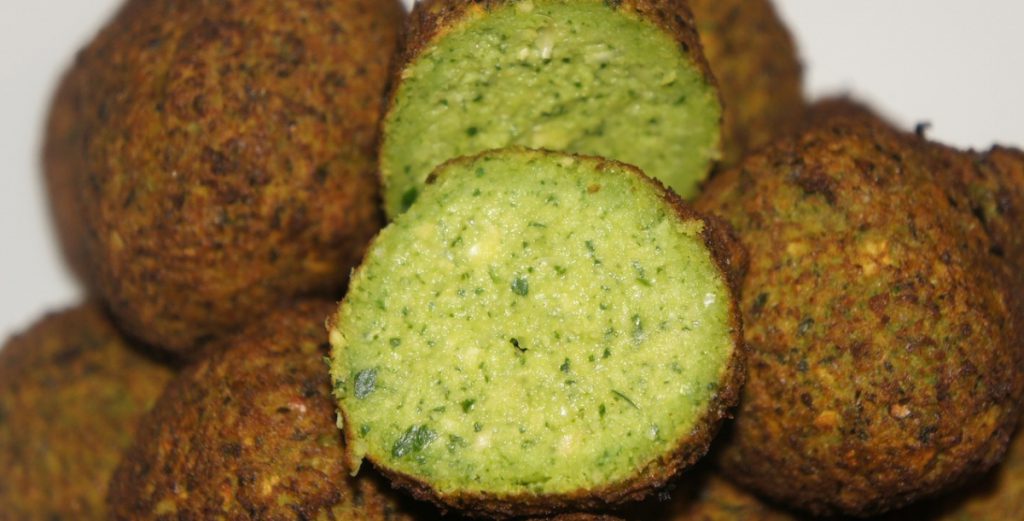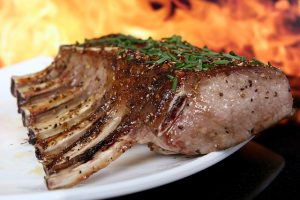
About a month ago I published an article on the Mediterranean Diet and its awesome benefits. A lot of you guys seem to have enjoyed that post. Well, I got another treat in store for y’all.
Introducing the Middle Eastern Diet.
Before I get started on this, remember what I said in the Mediterranean Diet article. It’s not so much a diet as it is a lifestyle. These “diets” got to be called that because those that eat and live that way are in great health. Automatically, people assume that it must be the food that’s doing it.
That thinking isn’t necessarily wrong. But there is SO MUCH more than just food that keeps people healthy. That’s why I called it a lifestyle. And the Middle Eastern Diet is no different.
I will refer to it as the Middle Eastern Diet for the sake of simplicity. But know that the diet alone isn’t the key to vibrant health.
So what’s up with this Middle Eastern Diet? What does that have to do with the Mediterranean Diet? Are they really that similar? In what way? And why should I care about something like this?
Let’s address these questions one at a time.
Similarities W/ Mediterranean Diet
First off, the Middle Eastern Diet and the Mediterranean Diet are very similar. In case you haven’t already, go ahead and check out my previous article on the Mediterranean Diet. You’ll get a pretty good understanding of what that is really about.
Second, the Middle Eastern Diet does have a few differences and nuisances of its own. Besides just the difference in name, this diet is also a very healthy alternative to the Standard American Diet.
As the name implies, the Middle Eastern Diet originated from the Middle East. This style of eating is especially prevalent in countries like Saudi Arabia, Persia, Israel, Georgia, and Turkey.
Because of its location, the Middle East has been influenced by a wide variety of cultures, with food being one of the most influenced aspects. Travelers from Europe, Asia, and Africa frequently cross this area and bring with them their cultural foods and dishes.
General Principles
There are a few principles the Middle Eastern Diet follows. As said before, a lot of this is going to be similar to that of the Mediterranean Diet. Some of the basics of this diet includes:
- Plenty of Vegetables
- Limited Red Meat (lamb and sheep are red meat of choice)
- Cook food with clarified butter
- Cereals like rice, wheat and barley are staples
- More whole foods and less processed foods
Unlike the Mediterranean Diet, the Middle Eastern Diet places more emphasis on grains. You guy already know how I feel

about this and the reason why. The science behind grains isn’t exactly appealing.
But nevertheless, the Middle Eastern Diet has shown to have similar benefits of the Mediterranean Diet. This has a lot to do with the last point: eating more whole foods and less processed foods.
With more nutritious whole foods in the diet, it’s much easier for the body to get what it needs to function as opposed to eating processed foods with its nutritional valued stripped.
If you recall from the my review on fermented cod liver oil gel with high vitamin butter oil, synthetic vitamins and minerals are often added to foods so the labels can boast how good they are for us.
And wouldn’t you know? A lot of processed grains has had vitamins, minerals and other synthetic micronutrients added to them. Ever see the label “Enriched Grains”?
So with an emphasis on wholesome foods, the Middle Eastern Diet already sets itself apart from the Standard American Diet.
And we have the limited consumption of red meat and veggies with most meals. This is also something that the Mediterranean Diet focuses on.
Then we have cooking with clarified butter. Clarified butter is basically milk fat from butter that’s been separated from the water and solids in regular butter. It’s more concentrated in nutrients since the water is separated from it.
So we’re getting whole foods cooked in natural nutritious butter with the occasional red meat and little to no processed foods. Yes we have grains as a staple, but if that’s the only downside, it’s not hard to see why this diet works!
Types Of Food
With the amount of veggies includes in the diet, one of the most common foods with this diet is vegetables stuffed with other types of food. We’ll often see cabbage or chard stuffed with rice, meat, and/or nuts and then stewed.
Dairy is a common on especially in Saudi Arabia. Milk and yogurt on consumed very frequently. So are cheeses like Greek feta (no surprises here) and haloumi.
Vegetables are included with almost every meal here. With everything from squash to tomatoes to okra, this diet doesn’t hold back when it comes to the good stuff.
Since pork is prohibited in Islam and Judaism, pork is the rarest meat in the Middle Eastern Diet. Instead, we find plenty of lamb and mutton (a type of sheep) cooked in the form of kebabs. Chicken is also another common form of meat in this diet.
And the Middle Eastern Diet would not be complete without the flavorings that comes with all the foods. Cinnamon, cumin, coriander, black pepper, and many other spices are used to really spice up the already delicious cooking. Garlic and clarified butter are used liberally with most dishes.
Now we’ve come to the final component of the Middle Eastern Diet. You’ve probably guessed it, it’s the one that I’m not particularly fond of. The breads, rice, and other cereal grains. It is a staple in this diet as it is in the Mediterranean Diet. But again, the grains here are not processed like they are in other developed countries.
Although I don’t agree with the grains of this diet, it’s still a great choice over many of the common eating styles today.
Differences
Everything so far has sounded like the Mediterranean Diet. The veggies, limited red meat, grains, and use of fats for cooking. But the Middle Eastern Diet is not without its own unique areas. Besides the fact that it’s more prevalent in the Middle East than the Mediterranean, here are a few of its unique features.
Less Meat
This may have to do with the lack of pork in the diet, but the Middle Eastern Diet includes less meat overall than the Mediterranean Diet. Most of the meats come from lamb and sheep, and both of these red meats are typically limited to moderate amounts.

Although the Middle East is surrounded by several bodies of water, seafood isn’t as emphasized as red meat is. Goats and sheep really are the prime meat of choice there.
The Mediterranean Diet allows for more meat overall with pork, beef, chicken, seafood, and other red meat. There’s more of a variety of non-red meat, which gives the diet more room to include them.
But this isn’t necessarily a bad thing (may be for the meat lovers out there). Less meat means there’s more room for healthy veggies!
More Emphasis On Veggies
As mentioned earlier, there’s veggies with almost every meal in this diet. It can be cooked in a lot of different ways, so it’s not always served on the side as a separate dish.
Cabbage can be used as wraps, eggplants are served as slices dressed in yogurt, tomatoes are grilled along with meats on a kebab, etc. There are veggies everywhere with this diet.
Lentils is also another food group that’s common here. Fava beans, chickpeas, black-eye peas, and many other lentils are either eaten green, dried, boiled, or mashed to make paste.
Falafel and hummus are just two of the common foods to come from the Middle East.
Whether made into a paste or incorporated into salads, soups, and rice, veggies and lentils are a very common part of the Middle Eastern Diet.
Copious Amount of Clarified Butter
It may be hard to believe, but this diet has even more fats in it than the Mediterranean Diet. Just like extra virgin olive oil is used in the Mediterranean Diet, clarified butter is used for cooking pretty much everything.
Cooking in butter from grass-fed animals has a whole host of benefits for our health. And no the saturated fats are not bad for us. I’ll go into further in my next article.
This diet also includes extra virgin olive oil. It’s just that clarified butter is also used for a lot of its cooking.
And this type of butter needs to be prepared beyond that of regular butter. One way to make clarified butter is to evaporate the water and skim out the solids, leaving behind the milk fat that’s the clarified butter.
Or a centrifuge can be used where the solids and water portion of the butter are separated from the pure milk fat via centrifugal force.
Either way, this form of cooking fat is widely used in the Middle Eastern Diet.
Dairy
This diet definitely includes more diary than the Mediterranean Diet. It can be said that just as much as the Mediterranean Diet includes nuts and seeds, the Middle Eastern Diet includes dairy.
Cheeses, milk, and yogurt are all used often in different forms.
We can easily find veggies with melted cheese on top of inside with meats. Or they may be coated with a certain type of yogurt. Milk, either fresh or sour, are consumed on a regular basis.
No Mention Of Exercise
The one thing that I noticed when simply looking up the Middle Eastern Diet is that there’s no mention of regular exercise. It seems that the sole focus is on the food aspect.
Remember what was said about this “diet”? It isn’t just about food.
Information on the Mediterranean Diet often includes exercise because it’s gain popularity and press over the years. People are beginning to see that those in this region doesn’t only eat well, they live well.
And living well includes getting regular exercise and physical activity.
This is not to say the Middle Eastern Diet doesn’t promote being active. I can’t say this for sure, but I think because it’s not as popular as the Mediterranean Diet and because it’s usually clumped together with it, exercise is assumed to be a part of this lifestyle.
But just be aware that even though exercise isn’t explicitly mentioned along with this diet, it should be a part of our daily lives regardless of what foods we’re eating.
Comparison
Of course, I have to compare the two different diets here. We talked plenty about the similarities at the beginning, then we went on to the differences between the two. So in summary, here are the major similarities and differences.
Similarities:
- Cook with natural fats
- Vegetables and grains are staples
- Limit meat consumption (especially red meat)
- Variety in our meals
Differences (Compared with the Mediterranean Diet):
- Less meat overall since most meats are red meat
- Vegetables are eaten more often
- Clarified butter is used more than extra virgin olive oil
- No explicit mention of physical activity (though it should be implied)
- More dairy like cheeses, yogurts and milk
Marginal Differences
Apparently, the differences between these two great diets are really marginal. There isn’t any big differences in either of the diets that would make one much less healthy than the other.
Of course, if we have a nut or seed allergy, or a dairy allergy, then we’d be careful with taking on the one diet or the other. And there’s no specific rule stating that we have to adopt EVERYTHING the diet has to offer if we decide to give it a try.
Keep in mind the recurring theme on this site. Know what works for you.
If we’re not a fan of a certain type of veggies or meat, we simply eat less or avoid it altogether. Same goes for any diet or in this case “lifestyle” that we take on.
Now the science doesn’t lie about the health benefits of eating vegetables, getting exercise, and moderate consumption of calories in general. We can hate all those things all we want, but unless our genes allows you to get away with not following those principles, we should definitely work towards implementing them into our daily lives.
After, we only have one body in life.
Consistency Is Key
As always, I want to leave you guys with some info from scientific studies so you know that many others have experienced benefits from this.
Consider a study published int eh Journal of Cancer Research, where participants were put onto a diet that’s healthier than their original way of eating. They were also put into an exercise program that had them getting more physical activity than they were before.
After 12 months, not only did their body weight drop, the angiogenesis-related protein levels also dropped. This protein is associated with growth of cancer cells and tumors¹.
Although the study lasted for 12 months, that’s not saying we need to wait a year before we see results in our lifestyle changes for the better. The lesson here is consistency.
And just one more reason for us to eat and live healthier, diets like the Mediterranean Diet are being fazed out due to urbanization of the region². Due to the tourism and expansion of urban areas, healthy eating is getting harder and harder to maintain.
A lot of us are already living in urban areas and know first hand how difficult it is to remain strict on a healthy diet and remaining active.
So let’s do ourselves a favor and save healthy living from extinction. Adopting healthy diets like the Middle Eastern Diet not only bring us good health, but helps others do the same when we lead by example!
Stay healthy,
-Wing
References:
- http://dailytimes.com.pk/infotainment/15-Jul-16/cancer-promoting-protein-levels-reduced-by-diet-and-exercise
- http://www.thelocal.it/20160711/global-push-to-make-mediterranean-diet-sexy-again


Wow I have never tried the mediterranean diet, but it really does seem like a healtheir cleaner alternative which I really need! There are clear differences between the middle eastern diet and the mediterranean diet and I think the major distinction is whole foods and processed foods as well as the avoidance of red meat.
Jazzy,
Yes the avoidance of red meat is apparent in both. It’s just the meats in the Middle Eastern Diet consist of mostly red meat, the overall meat consumption is lower.
-Wing
I love to try foods from all around the world. The Mediterranean diet definitely sounds interesting but I am not too sure about the grains like yourself. When trying out the Mediterranean diet or is it ok to just start 100% or should I allow my body to slowly adjust? I like the idea of more vegetables, but this diet does seem to include a lot of butter.
Keldyn,
I’d definitely stay away from grains and other starchy carbs if you plan to adopt the high fat aspect of the Mediterranean Diet. Veggies are fine and having fats and moderate protein is good too. It seems you’re staying away from grains anyway so I think you should be fine.
If really not sure, ease into the diet and see how your body adjusts!
-Wing